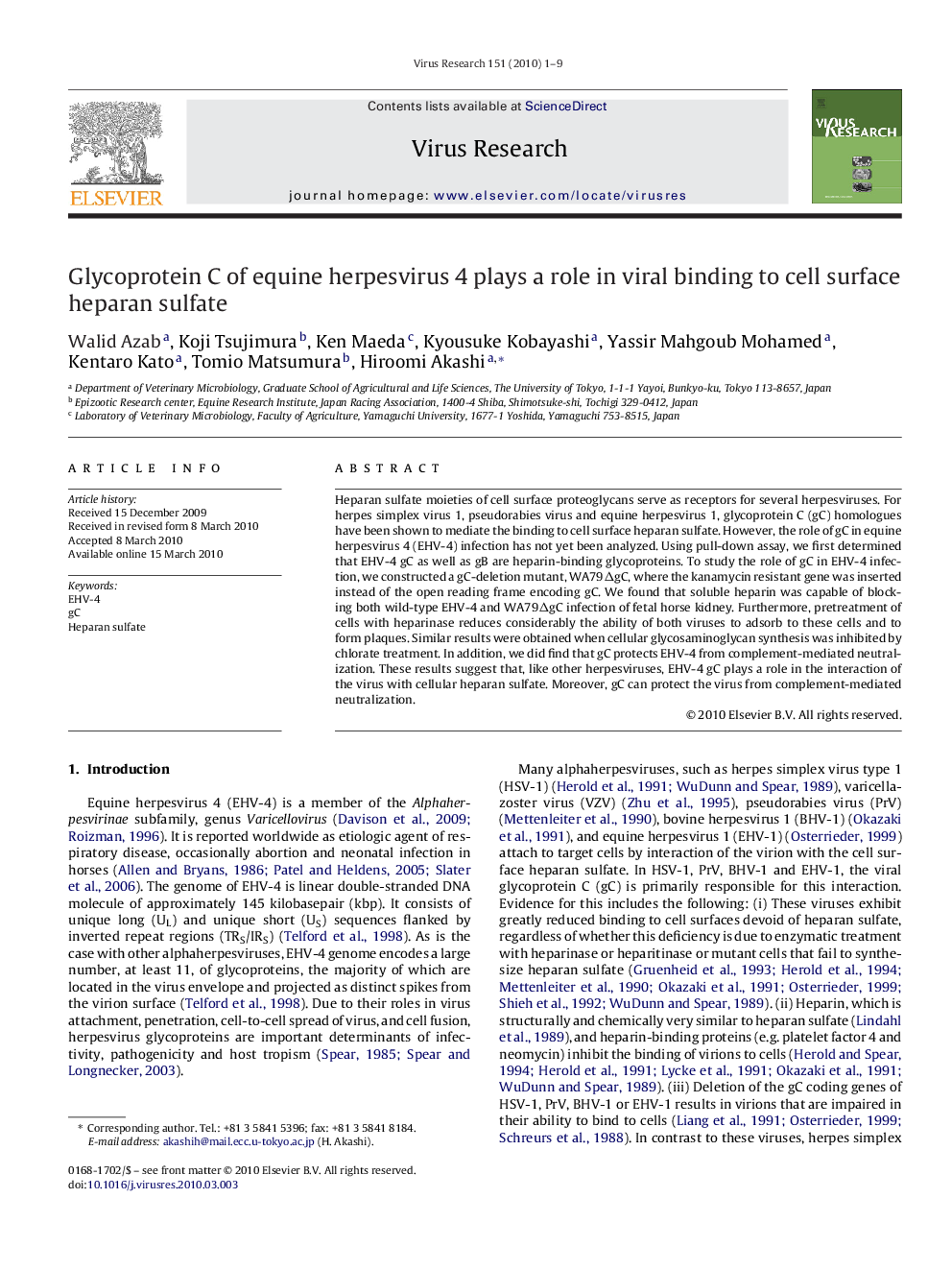| Article ID | Journal | Published Year | Pages | File Type |
|---|---|---|---|---|
| 3429400 | Virus Research | 2010 | 9 Pages |
Heparan sulfate moieties of cell surface proteoglycans serve as receptors for several herpesviruses. For herpes simplex virus 1, pseudorabies virus and equine herpesvirus 1, glycoprotein C (gC) homologues have been shown to mediate the binding to cell surface heparan sulfate. However, the role of gC in equine herpesvirus 4 (EHV-4) infection has not yet been analyzed. Using pull-down assay, we first determined that EHV-4 gC as well as gB are heparin-binding glycoproteins. To study the role of gC in EHV-4 infection, we constructed a gC-deletion mutant, WA79ΔgC, where the kanamycin resistant gene was inserted instead of the open reading frame encoding gC. We found that soluble heparin was capable of blocking both wild-type EHV-4 and WA79ΔgC infection of fetal horse kidney. Furthermore, pretreatment of cells with heparinase reduces considerably the ability of both viruses to adsorb to these cells and to form plaques. Similar results were obtained when cellular glycosaminoglycan synthesis was inhibited by chlorate treatment. In addition, we did find that gC protects EHV-4 from complement-mediated neutralization. These results suggest that, like other herpesviruses, EHV-4 gC plays a role in the interaction of the virus with cellular heparan sulfate. Moreover, gC can protect the virus from complement-mediated neutralization.
